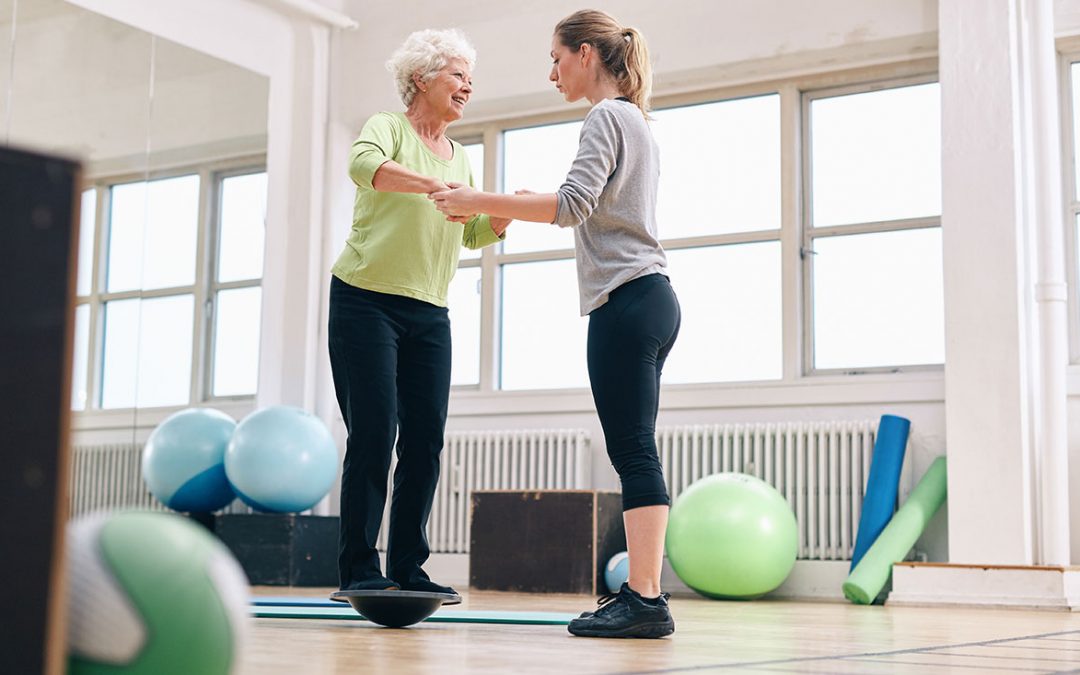Our ability to balance depends on the interaction of sensory input and the brains ability to process that information and relay messages to the muscles to make any postural adjustments required to maintain stability. This sensory input occurs at rapid speed and often goes unnoticed, however, following injury, neurologic insult or aging these systems can be affected greatly, increasing our fall risk. The good news is you can change it with exercise intervention. First a little background on the sensory systems.
The Three Systems of Sensory Input
Vision (eyes): Humans have a great ability to see in rich detail and because of this our default sensory input is getting communication from the periphery on stability and movement of the environment as relates to our body position.
Proprioception (body sense): our bodies have nerve receptors located in our joints, muscles and skin that give us feedback on the position and movement of our limbs and trunk as well as the sense of effort, force, and the sense of heaviness.
Vestibular (inner ear/eyes/trunk): Within each ear we have a vestibule sensory organ that provide our brain information on motion, head position and spatial orientation. This system allows us focus eye movements while moving and also sends signals to our trunk muscles to correct posture/stability with movement.
How to Train Your Balance
The following exercises are designed to improve balance and increase your proprioception (body sense of information about the orientation of your body in space). Be careful when you perform the exercises and take precautions to guard against falling. Be patient and remember that balance improves with consistent effort over time. Stop if your body fatigues or is unstable.
Standing Ankle Sways
5-10x slowly in each direction up to 3x/day or more.
Purpose: to improve balance by swaying at the ankles only and improve the limits of a controllable sway.

- Stand with your feet shoulder-width apart at a normalized standing posture. Focus your thoughts on the feeling your feet and the pressure sensation in contact with the ground. Weight should be equal side to side and centered front to back. Begin by slowly shifting your weight to your toes being mindful to not lift the heels or bend at the hips/trunk. Pause and gently shift back to the heels without lifting the toes or moving at the hips/trunk. Key in on the feel/body sensation at the limits of stability and how your body contracts to prevent balance loss. Begin slowly and gradually increase the distance your body can control motion without lifting/taking a step. If you move too far, step to prevent falling, but the goal is to remain stable.
- Repeat performing side to side.
- Perform “5-point” imaging the 5 of a dice where the center dot is the stable stance and move to a corner, then back to the middle, moving around to each corner then back to center.
- Repeat the above exercises (when ready) with eyes closed. Be sure to focus on the sensation in our feet, body as this helps the nervous system to learn. Have someone spot you our stand near a wall or with a stable chair in front of you for safety.
Balance Challenge Progression:
Up to 3x/day standing near a counter top or in doorway.
Purpose: to increasingly challenge and improve your balance by narrowing your base of support to tandem and then single-leg standing. Perform in a doorframe or narrow hallway for safety. Use hand support as needed. The goal is to stand as stable as possible with limited sway with eyes open for 20-60 secs. Once you can comfortably perform that, repeat the same position with eyes closed for 20-60 secs. When your eyes are closed, focus on the feeling of the ground through your feet and stabilize/contract your inner core. Use hands for safety as needed. Progress as ability allows and you are stable.

